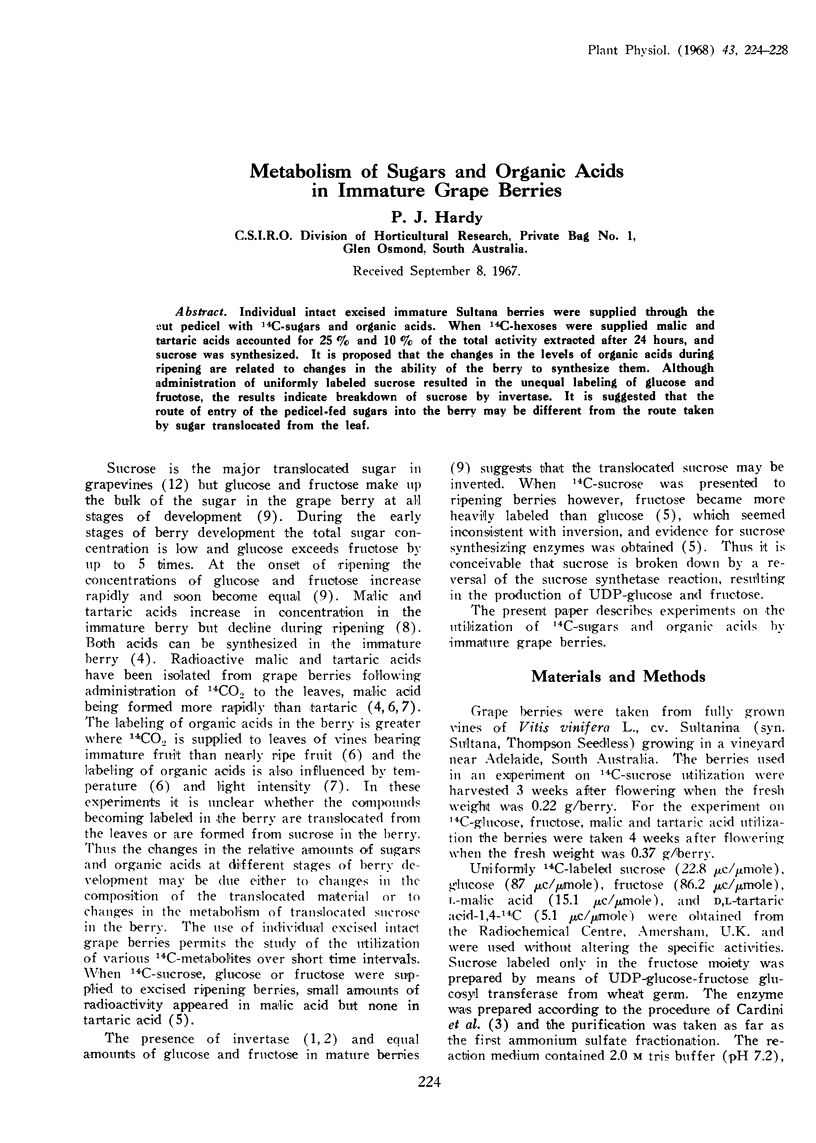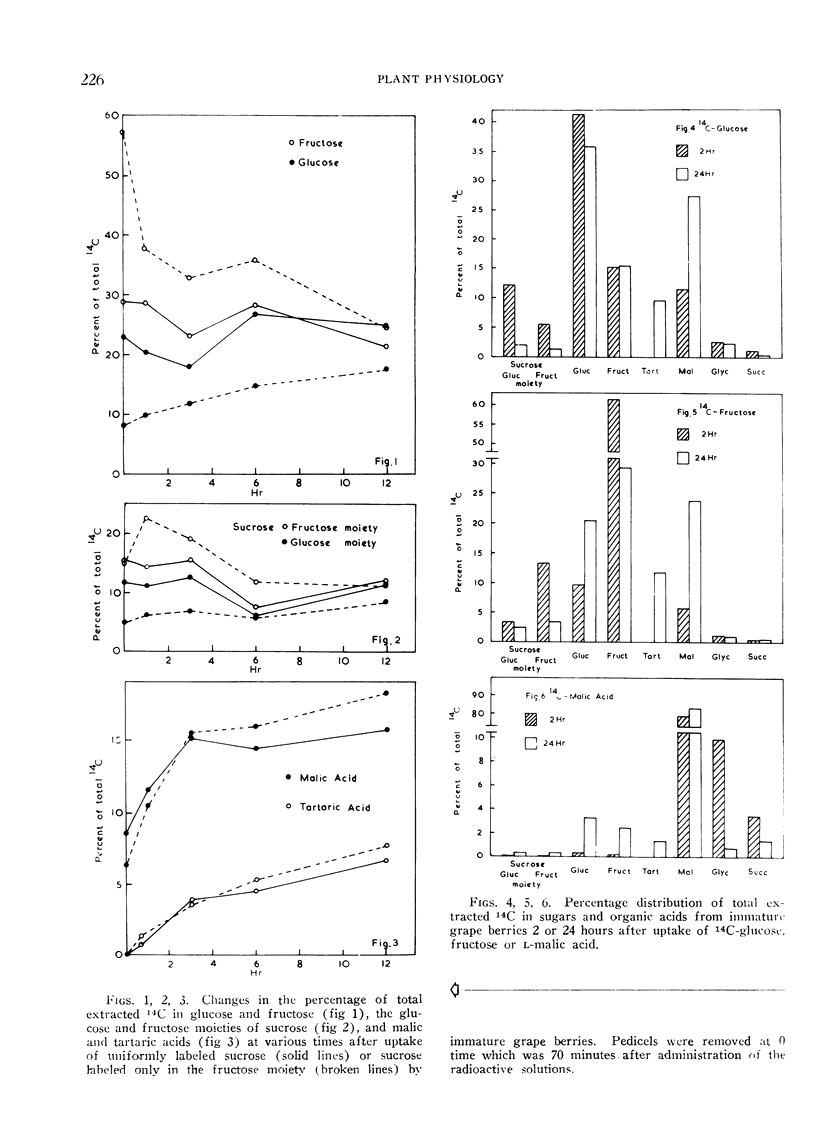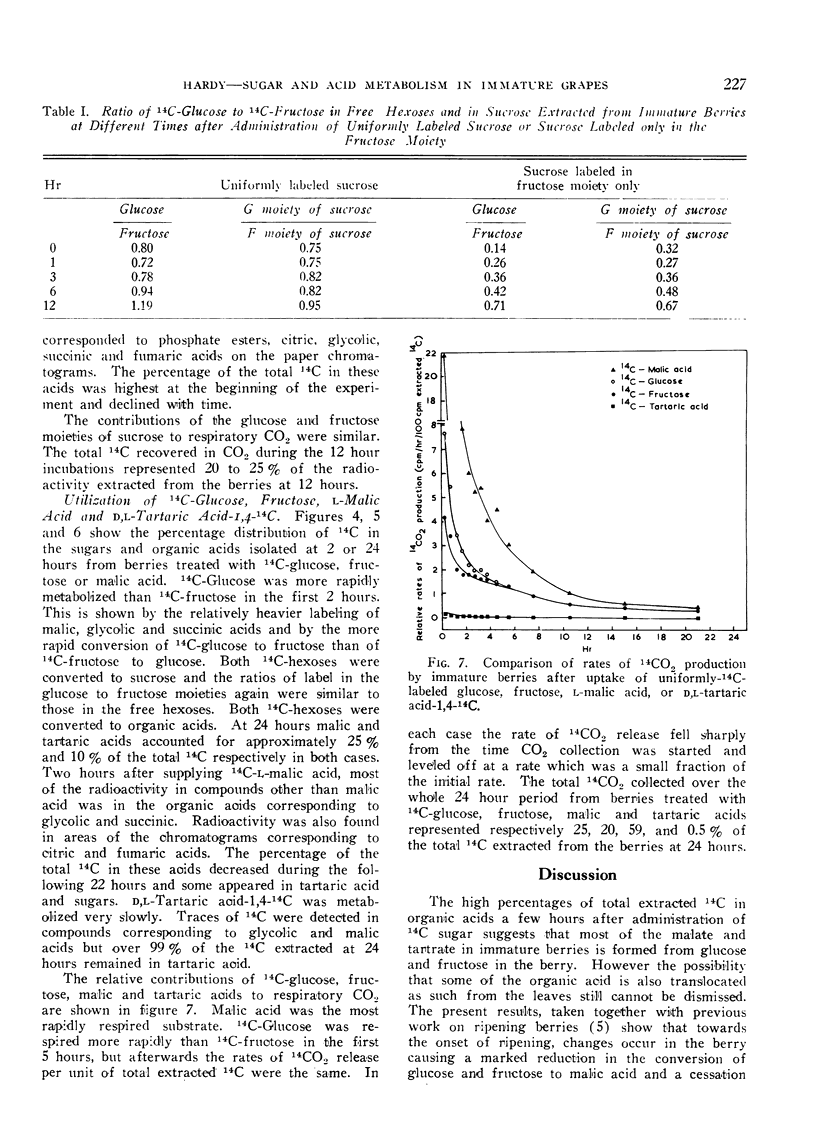Abstract
Individual intact excised immature Sultana berries were supplied through the cut pedicel with 14C-sugars and organic acids. When 14C-hexoses were supplied malic and tartaric acids accounted for 25% and 10% of the total activity extracted after 24 hours, and sucrose was synthesized. It is proposed that the changes in the levels of organic acids during ripening are related to changes in the ability of the berry to synthesize them. Although administration of uniformly labeled sucrose resulted in the unequal labeling of glucose and fructose, the results indicate breakdown of sucrose by invertase. It is suggested that the route of entry of the pedicel-fed sugars into the berry may be different from the route taken by sugar translocated from the leaf.
Full text
PDF




Selected References
These references are in PubMed. This may not be the complete list of references from this article.
- Arnold W. N. Beta-fructofuranosidase from grape berries. 3. The identity of the soluble and bound fractions. Biochim Biophys Acta. 1966 Oct 17;128(1):196–198. doi: 10.1016/0926-6593(66)90160-3. [DOI] [PubMed] [Google Scholar]
- Arnold W. N. Beta-fructofuranosidase from grape berries. Biochim Biophys Acta. 1965 Oct 25;110(1):134–147. doi: 10.1016/s0926-6593(65)80102-3. [DOI] [PubMed] [Google Scholar]
- Murata T., Sugiyama T., Minamikawa T., Akazawa T. Enzymic mechanism of starch synthesis in ripening rice grains. 3. Mechanism of the sucrose-starch conversion. Arch Biochem Biophys. 1966 Jan;113(1):34–44. doi: 10.1016/0003-9861(66)90153-6. [DOI] [PubMed] [Google Scholar]
- Swanson C. A., El-Shishiny E. D. Translocation of Sugars in the Concord Grape. Plant Physiol. 1958 Jan;33(1):33–37. doi: 10.1104/pp.33.1.33. [DOI] [PMC free article] [PubMed] [Google Scholar]


